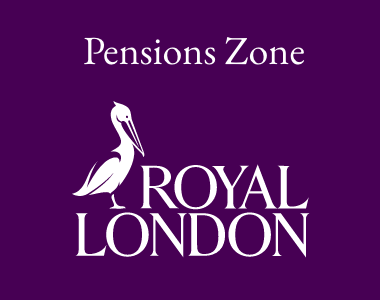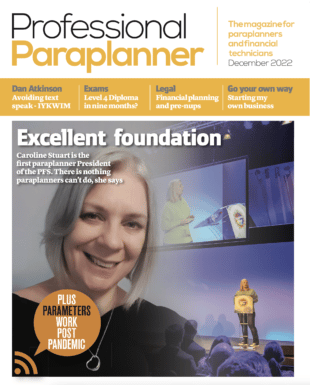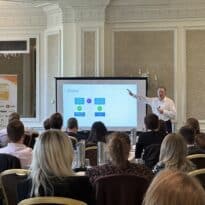Despite change, the benefits of bypass trusts remain, says Dave Downie, technical manager, abrdn
While the removal of the lifetime allowance may have strengthened the case for inherited drawdown, it’s not rendered bypass trusts obsolete.
That’s because bypass trusts aren’t chosen for tax reasons. They house pension death benefits when the overwhelming priority for a client is control over their legacy.
The LTA’s abolition is unlikely to have any material impact on their use in the right circumstances. But the changes it brought about could still have an impact on the taxation of pension death benefits paid into a bypass trust.
Paraplanners and advisers will need to understand these so they can advise clients accordingly.
When are death benefits tested against the LSDBA?
Age 75 remains a pivotal age for the taxation of death benefits. Death benefits may be paid tax-free before this age, but will be taxable afterwards.
Testing against the new lump sum and death benefit allowance (LSDBA), currently set at £1,073,100, only applies to death benefits paid out as a lump sum on deaths before age 75. Any excess above this limit that is paid to a discretionary bypass trust will be taxable on the trustees at the trust rate of 45%.
However, there will be no test at all where death benefits are inherited under a drawdown plan or taken as an annuity. Beneficiaries will be able to draw their benefits tax-free regardless of the size of the inherited pot.
This might be desirable. But leaving death benefits under drawdown also means that the original member has no control over where the pot may end up on a beneficiary’s death. This could give cause for concern where there are children from a previous relationship involved, or should the beneficiary remarry. There may also be worries over how the money will be used if beneficiaries are younger, vulnerable or simply can’t be trusted with a large windfall.
And there will be some schemes, typically DB schemes, that only pay out a lump sum, giving no option for drawdown at all.
Tax and bypass trusts
These concerns can be managed by creating a bypass trust and instructing the chosen trustees how funds are to be applied in the future.
Post LTA-abolition, directing a lump sum to a bypass trust may come at a cost, but not always.
If the lump sum is more than the member’s available LSDBA, the excess will be taxed at the recipient’s marginal rate of income tax. Where that recipient is a discretionary trust, the trustees will have to account for tax at the trust rate of 45%. Note that it is the trustees who must pay the tax – it is not the responsibility of the provider to deduct the tax before payment.
The tax paid will form part of the tax pool for the trustees. But this is only available for true income distributions and not payments of capital, unlike the position post-75 where distributions arising from the death benefit lump sum may be treated as notional income.
Consequently, the credits in the tax pool could be lost depending on the choice of investment.
Payments to beneficiaries arising from investment bonds are treated as capital distributions. Interest from non-equity funds will be taxed at 45% and that will match the tax credit needed to frank any distribution to a beneficiary.
That only leaves dividend income where there is a shortfall between the rate the trustees pay, and the credit needed to distribute it to the beneficiary which will get the benefit of the tax credit from the excess lump sum.
Theory into practice
Let’s look at this in practice.
If the LSDBA excess is £100,000, the trustees must pay tax of £45,000. This goes into the ordinary tax pool and leaves them with £55,000 to invest. If those investments produce a dividend of £5,000 in the first year, the trustees must pay tax at the trust rate of 39.35% (£1,968).
But if they choose to distribute the full £5,000 to a beneficiary, they must account for tax at the trust rate of 45% (£2,250). As they have already paid £1,968, they can make up the difference by using £282 from the tax pool (reducing it to £44,718). The beneficiary will receive £2,750 in their hands with a tax credit of £2,250. They will be taxed on the gross dividend of £5,000 but can reclaim any tax they overpaid. So, the tax due on the trust income for a basic rate taxpayer will be £1,000, and a reclaim of £1,250 can be made.
It should be emphasised that if a distribution from the £55,000 capital is made, there will be no tax credit attaching to this – it is simply a payment from capital. This differs from the special treatment applying to benefits paid where death occurs on or after age 75.
It should be noted that the tax position of death benefit lump sums for death on or after age 75 is unchanged.
There is no testing against the LSDBA, but the whole of any death benefits paid into a discretionary trust is subject to the ‘special lump sum death benefits charge’ of 45%. The tax is collected by the provider this time, with the trustees receiving 55% of the death benefit for investment.
The trustees also receive a tax credit for the 45% tax deducted. This can be passed on to a beneficiary when any of the original death benefit is distributed, and some or all of this can be reclaimed if the beneficiary pays income tax below the highest personal rate of 45%.
Planning ahead
It is crucial that clients make their nominations for death benefits where possible. Not only does this guide scheme administrators who pay benefits too, it also means that individual recipients have a choice over how they take benefits.
While nominations to a trust can of course only be for a lump sum, they don’t have to be all or nothing. A tax charge can be avoided on pre age 75 death benefits by paying an amount up to the member’s available LSDBA into a trust, with the balance left to individuals to take under drawdown or an annuity.
For more details on how to determine available LSDBA, we’ve prepared a guide on our website here.
By understanding this, and how the new policy affects death benefits, paraplanners and advisers will be in a stronger position to secure good outcomes for their clients.































